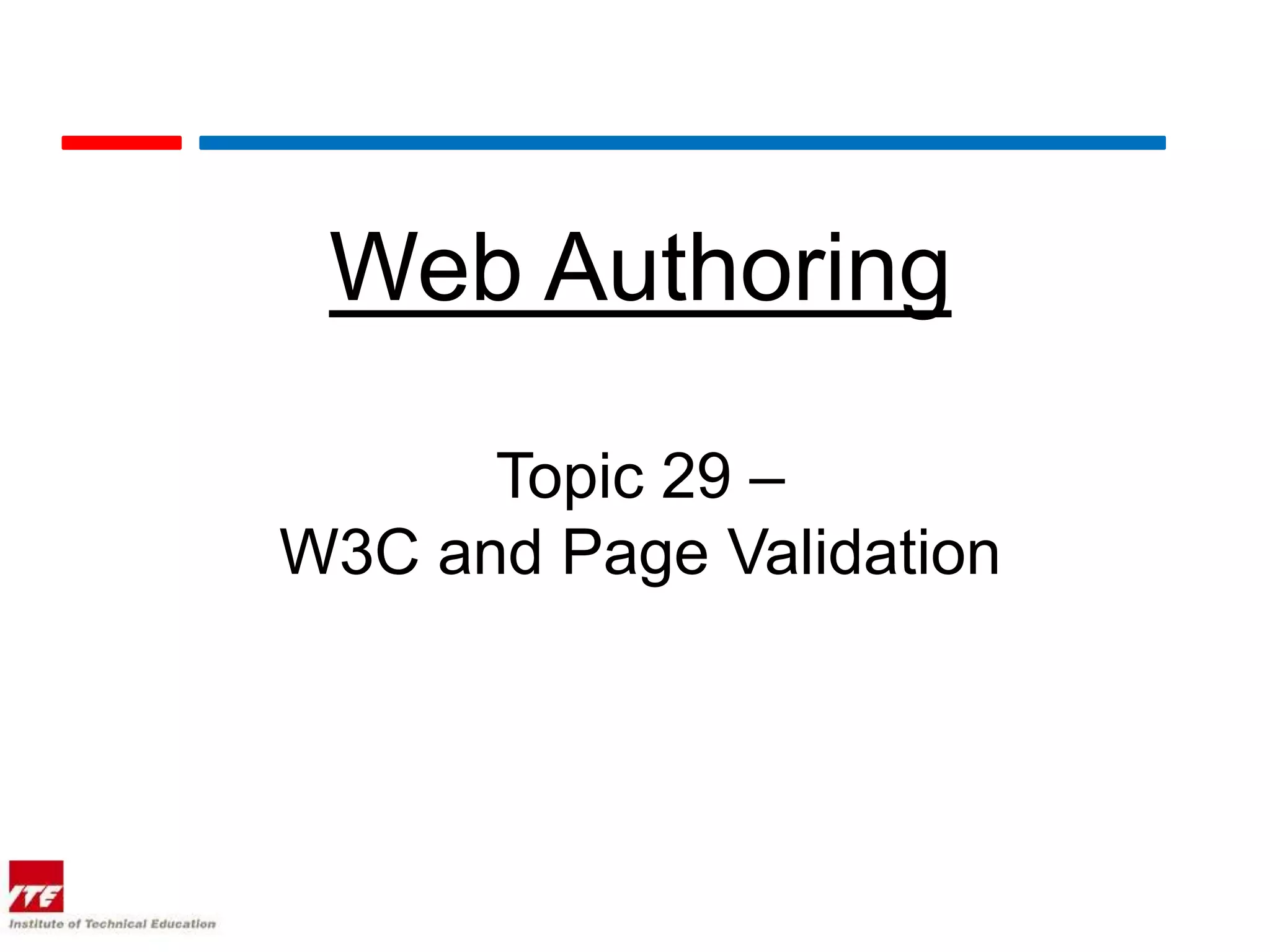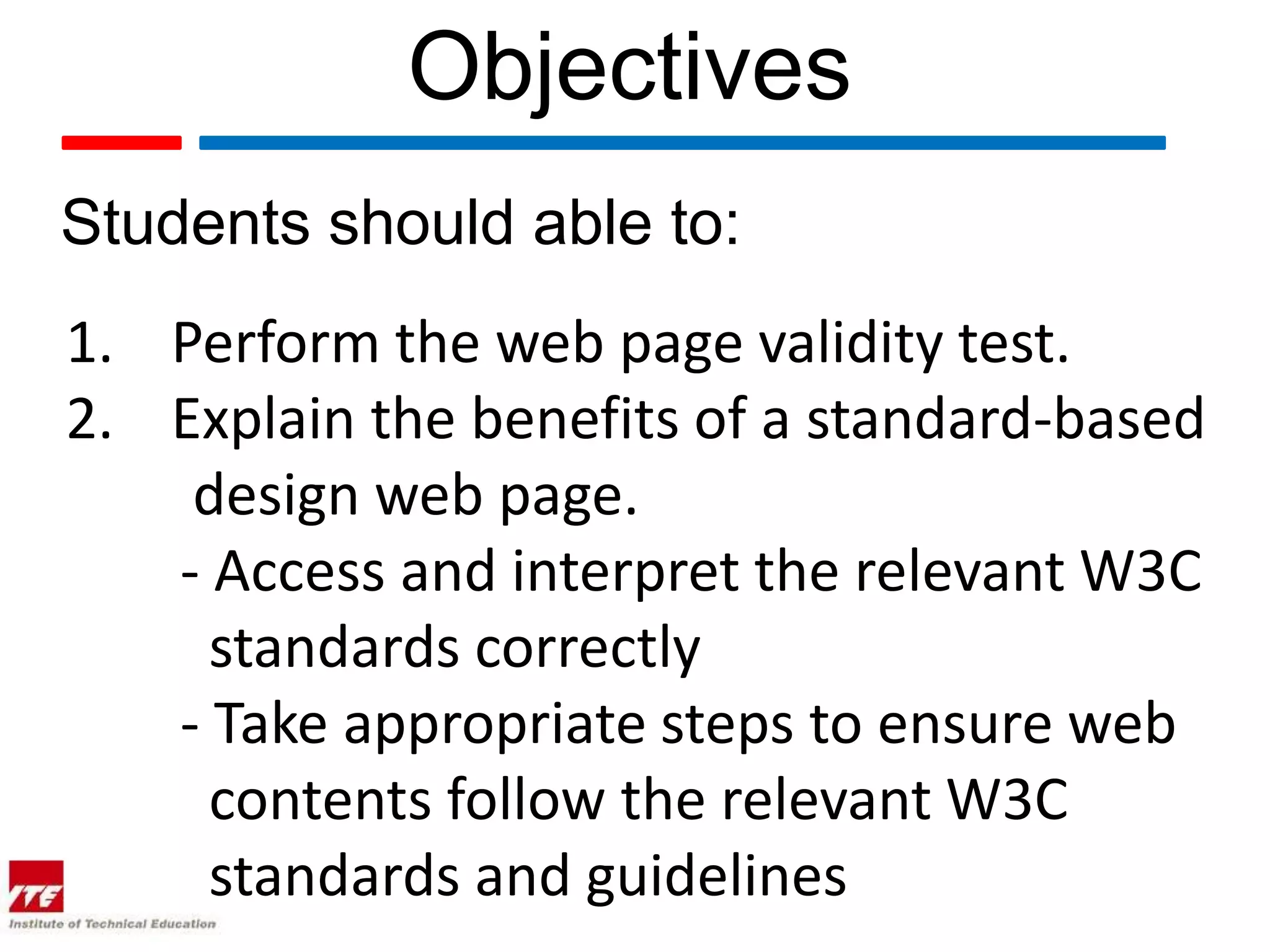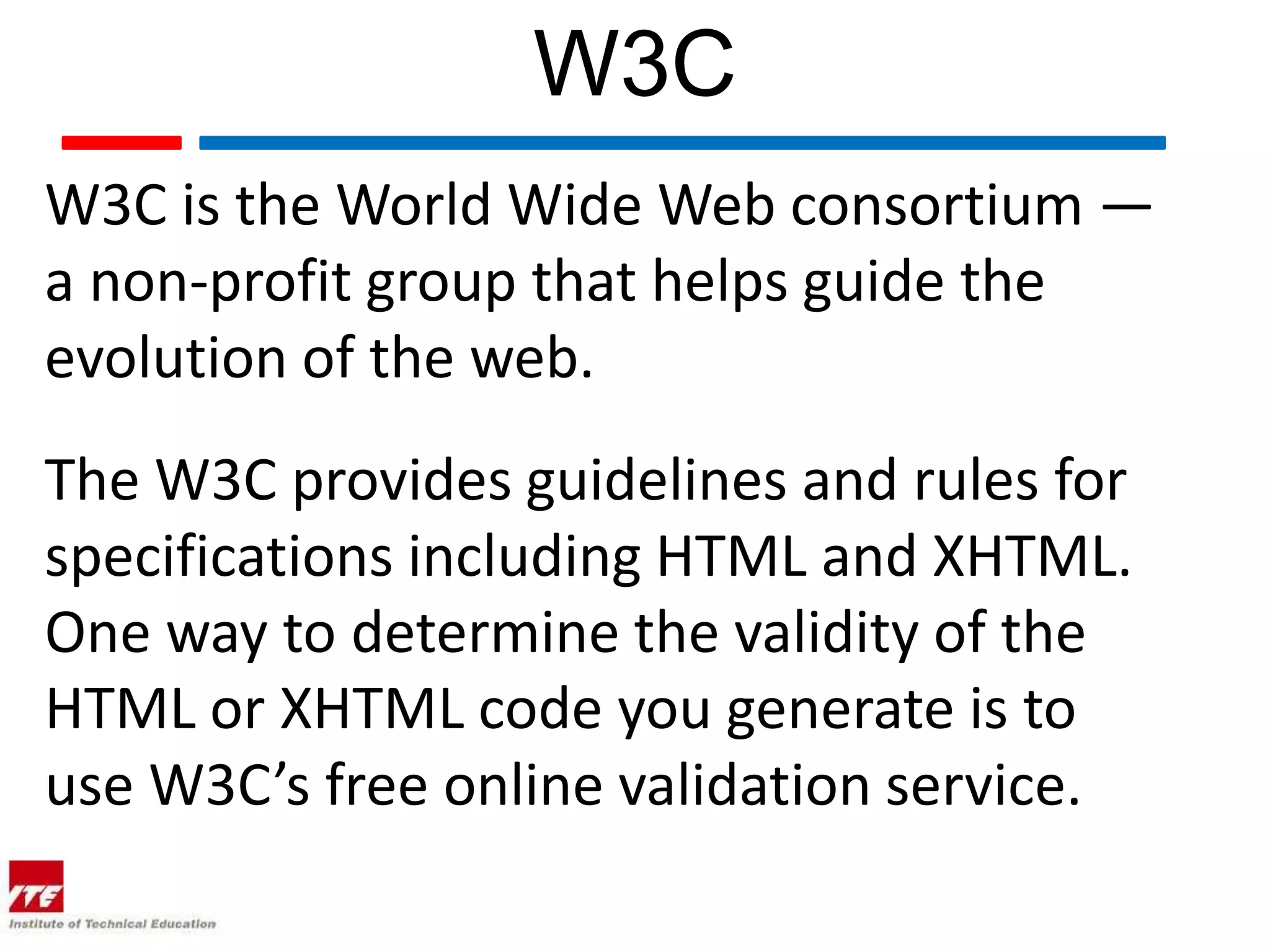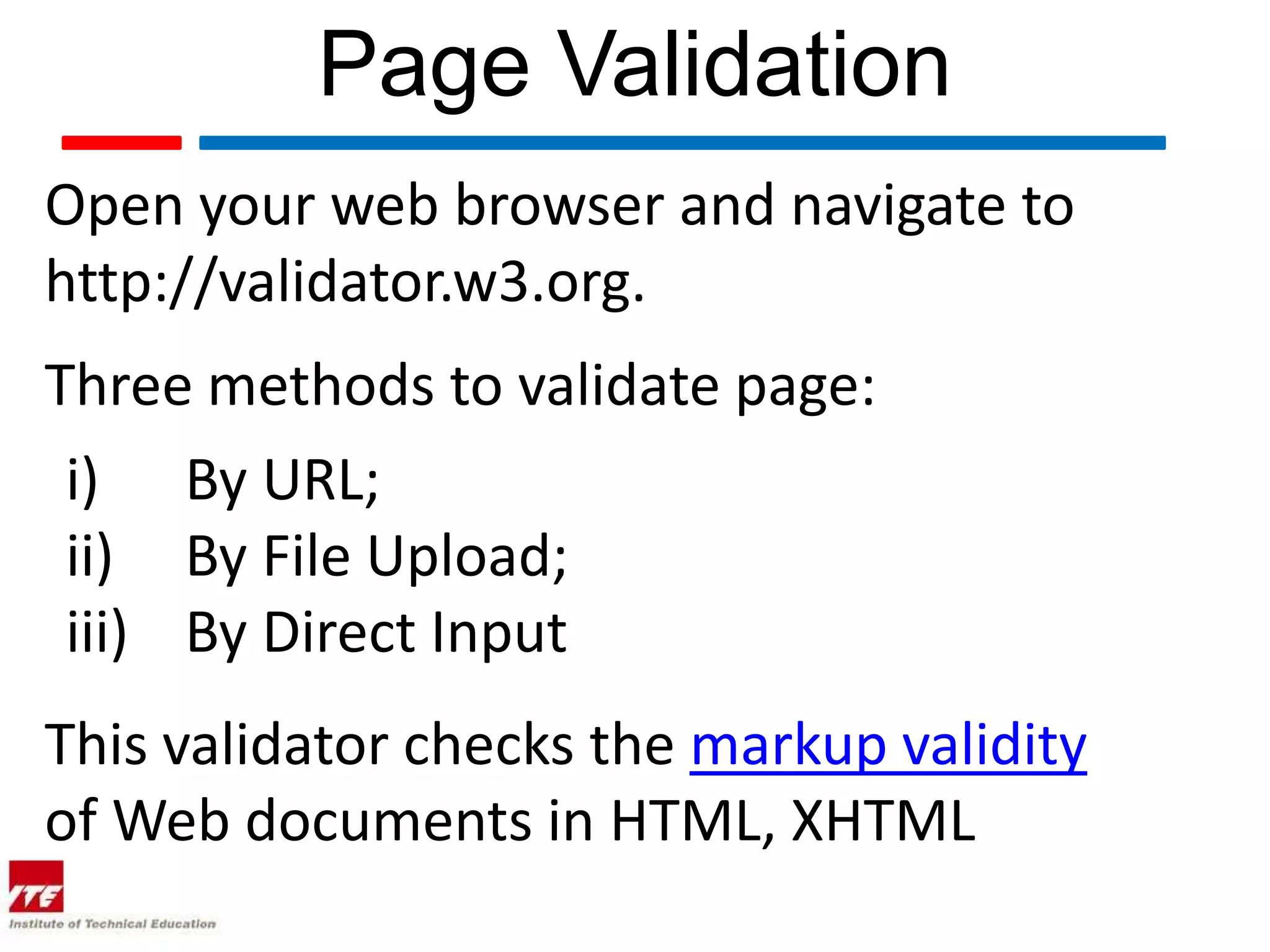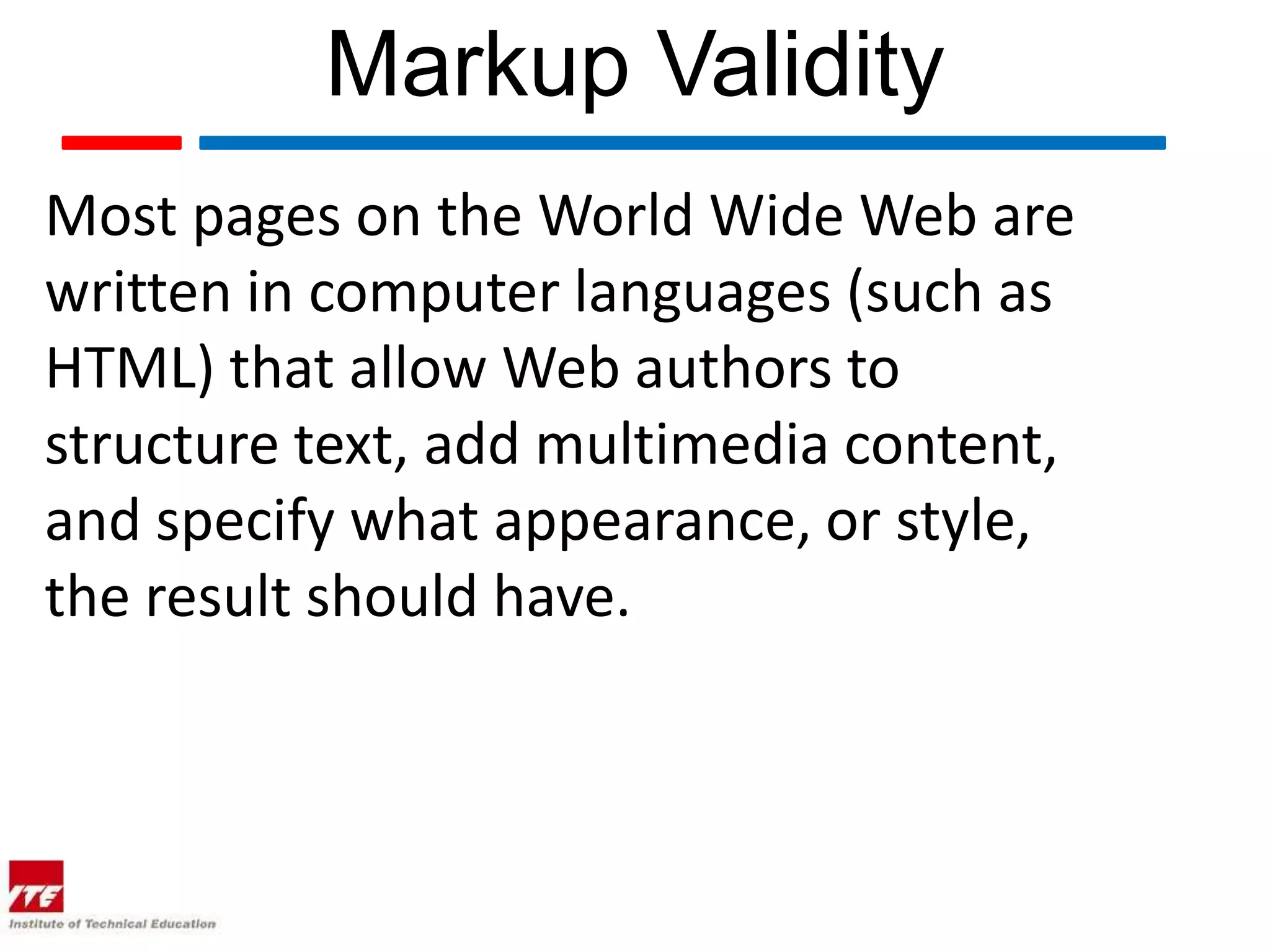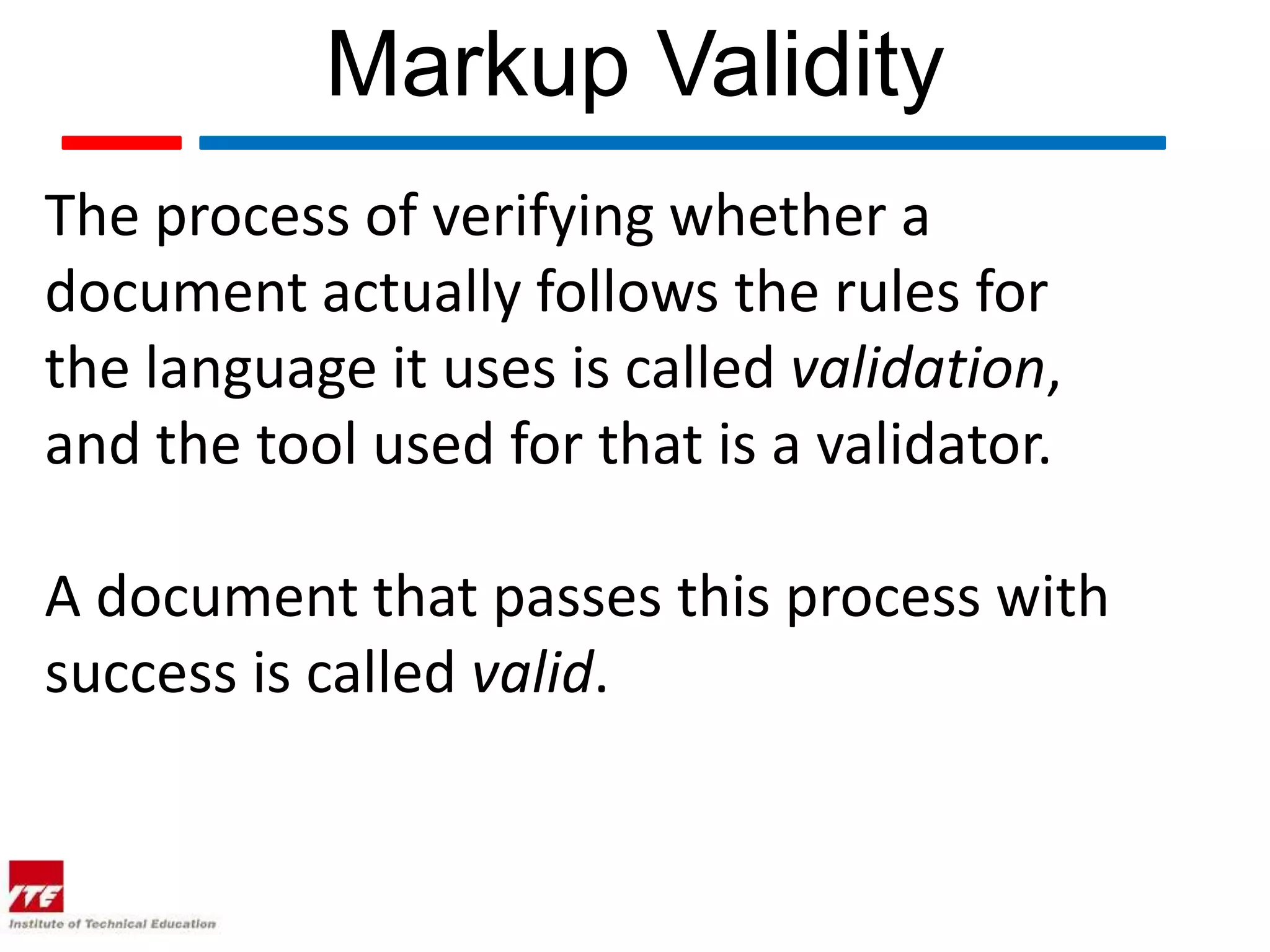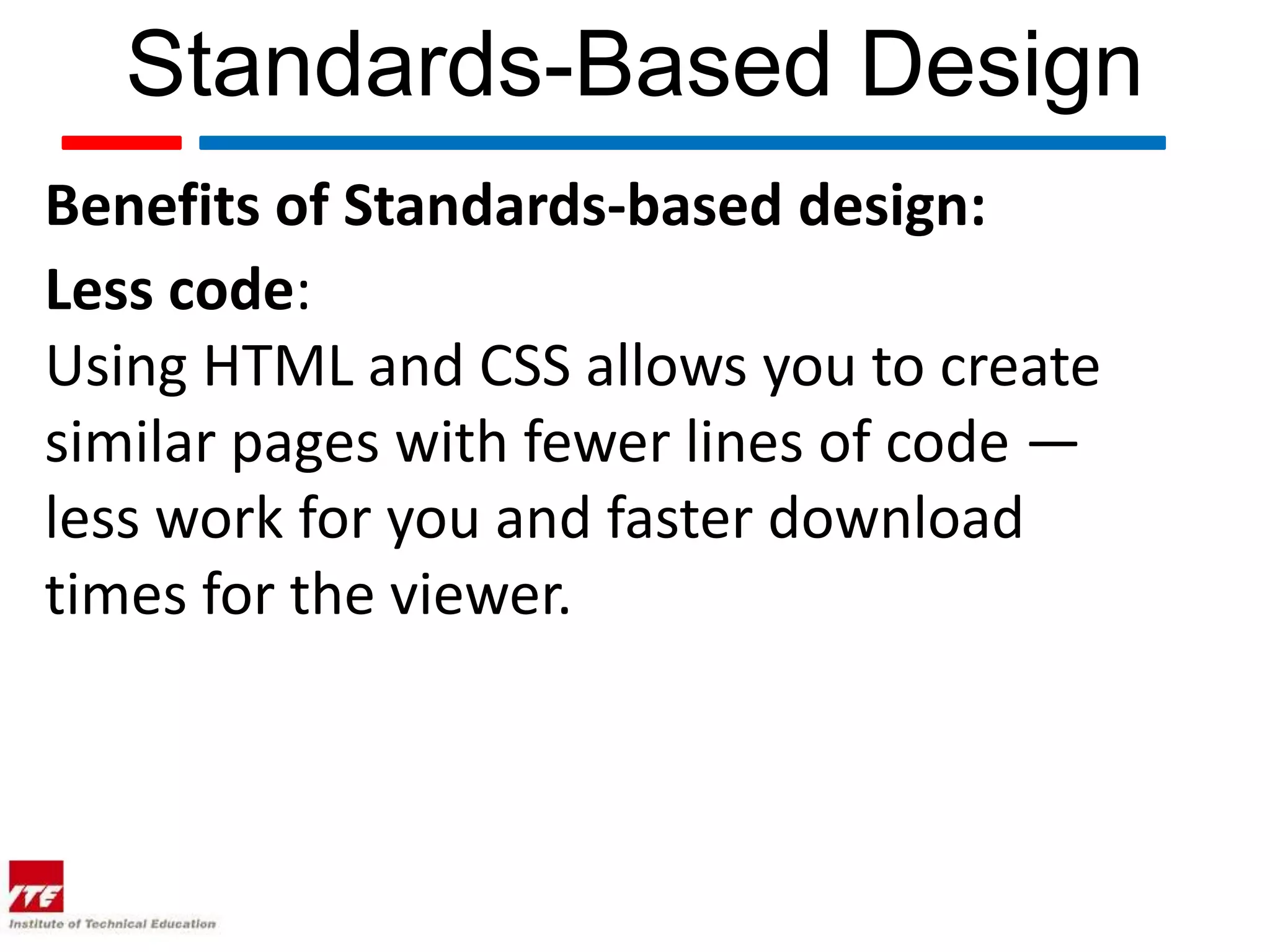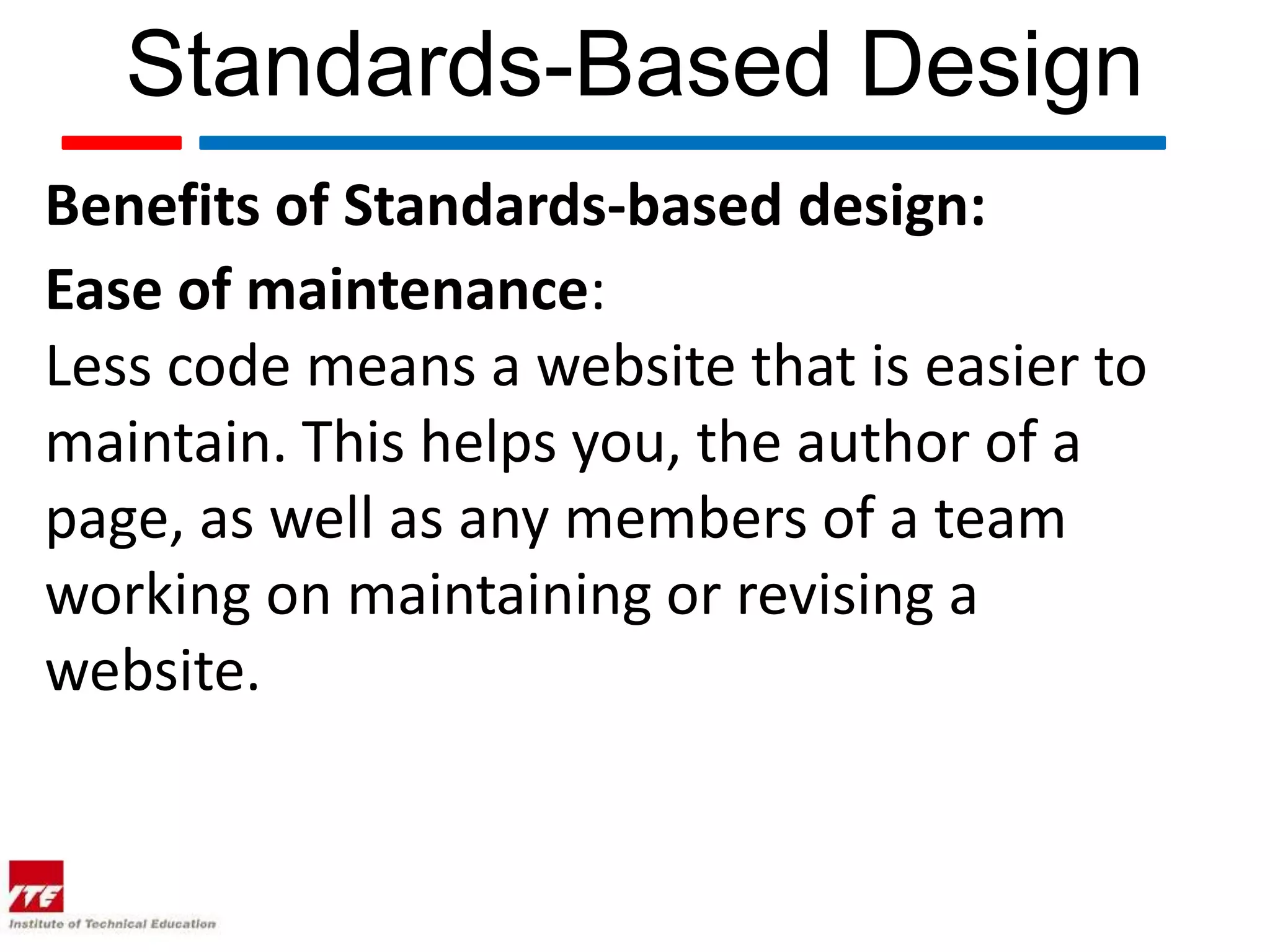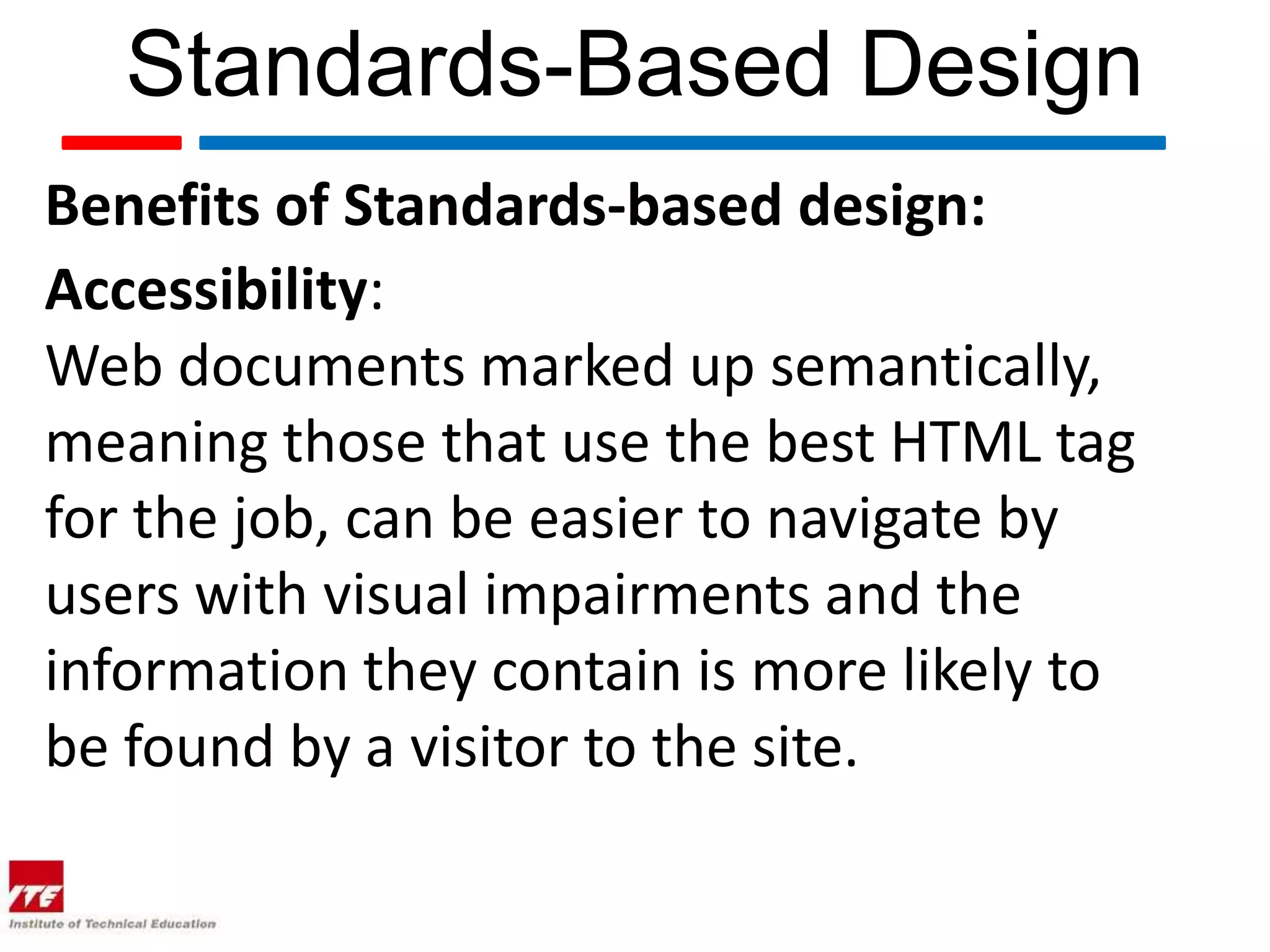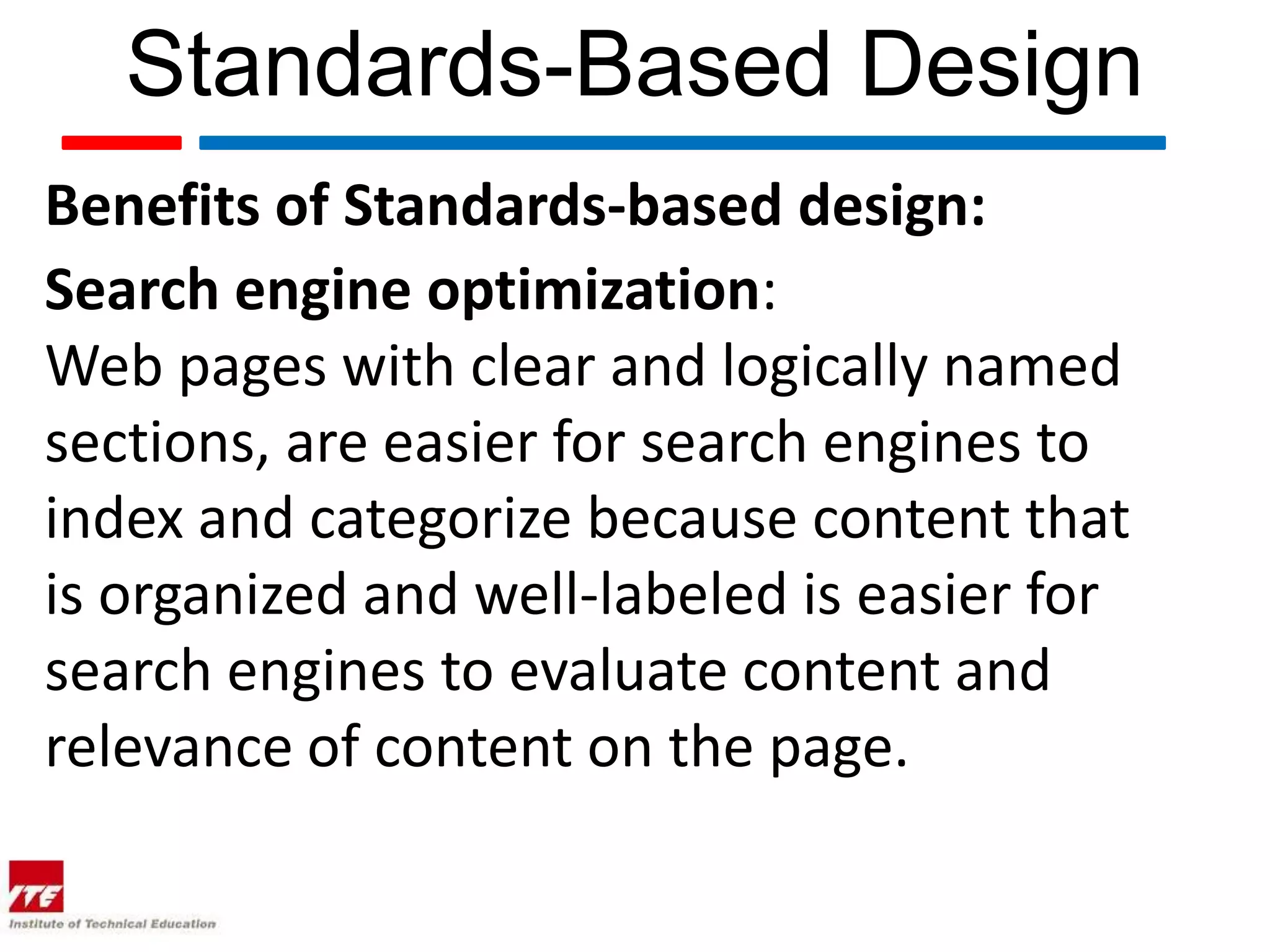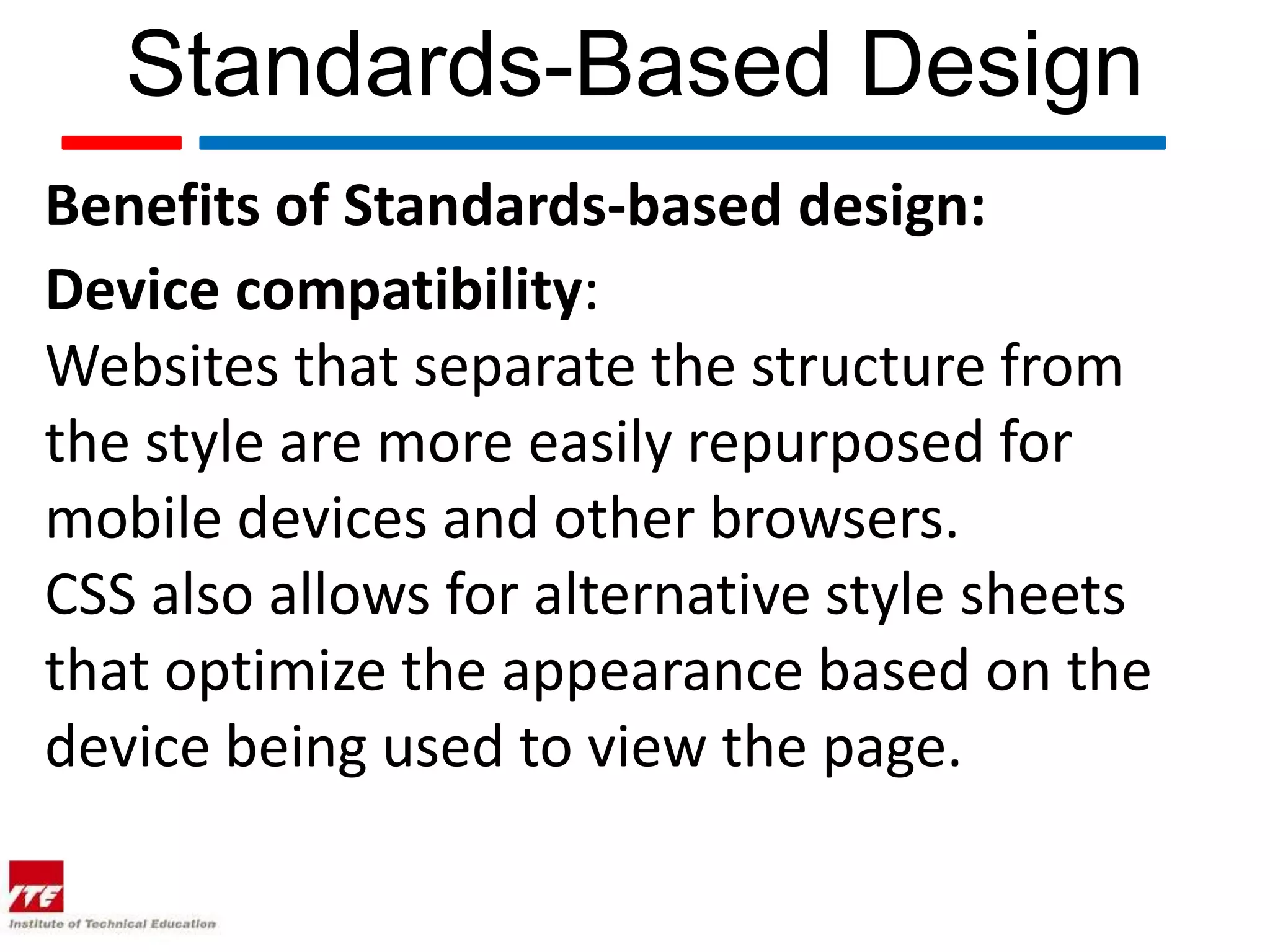This document discusses web page validation and the benefits of standards-based design. It explains that the W3C provides guidelines and specifications for HTML and XHTML and offers a free online validation service. Validating checks that a web page follows the correct markup rules. Standards-based design using HTML and CSS requires less code, makes pages easier to maintain and access, improves search engine optimization, and increases compatibility with different devices.
